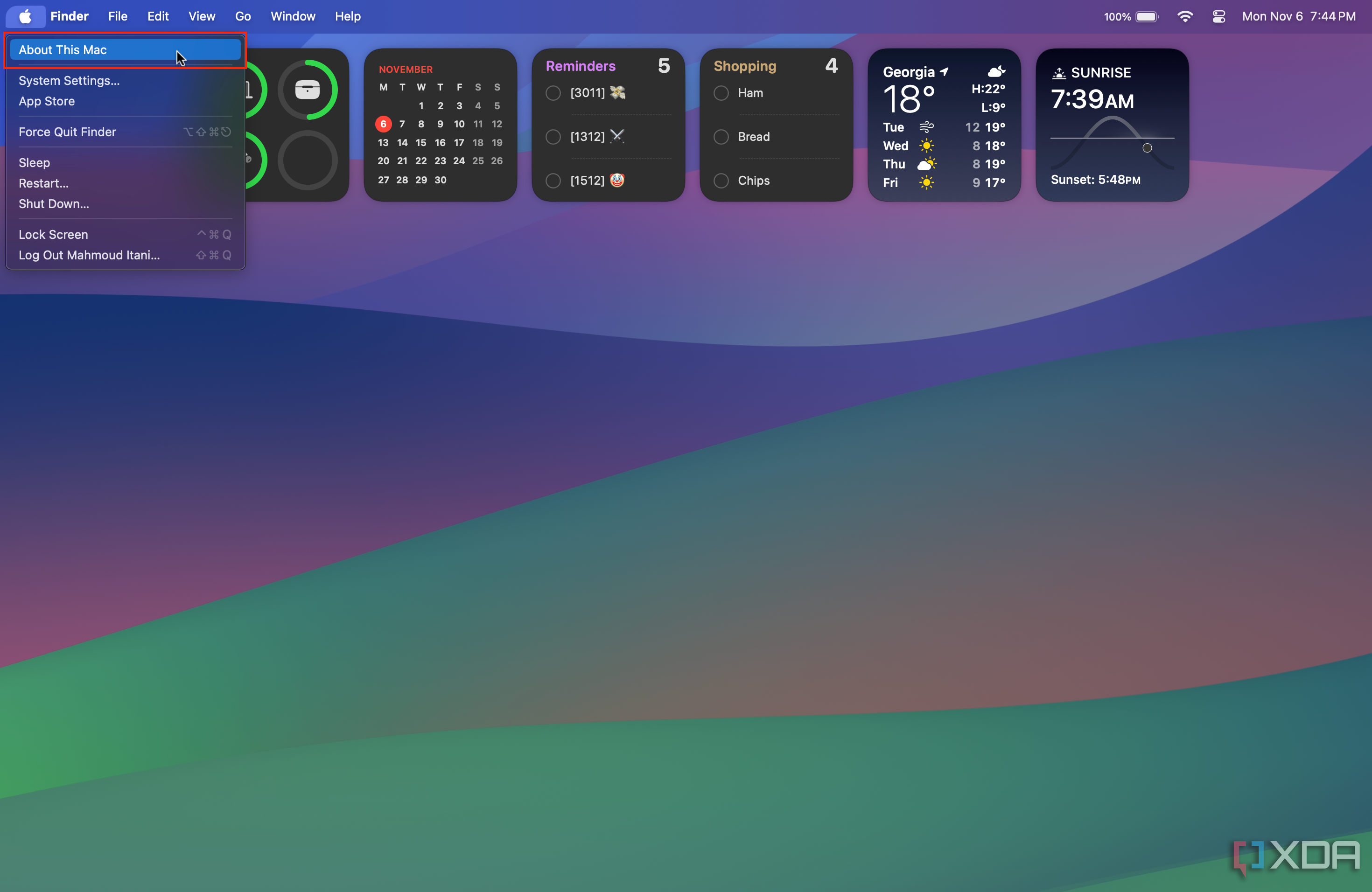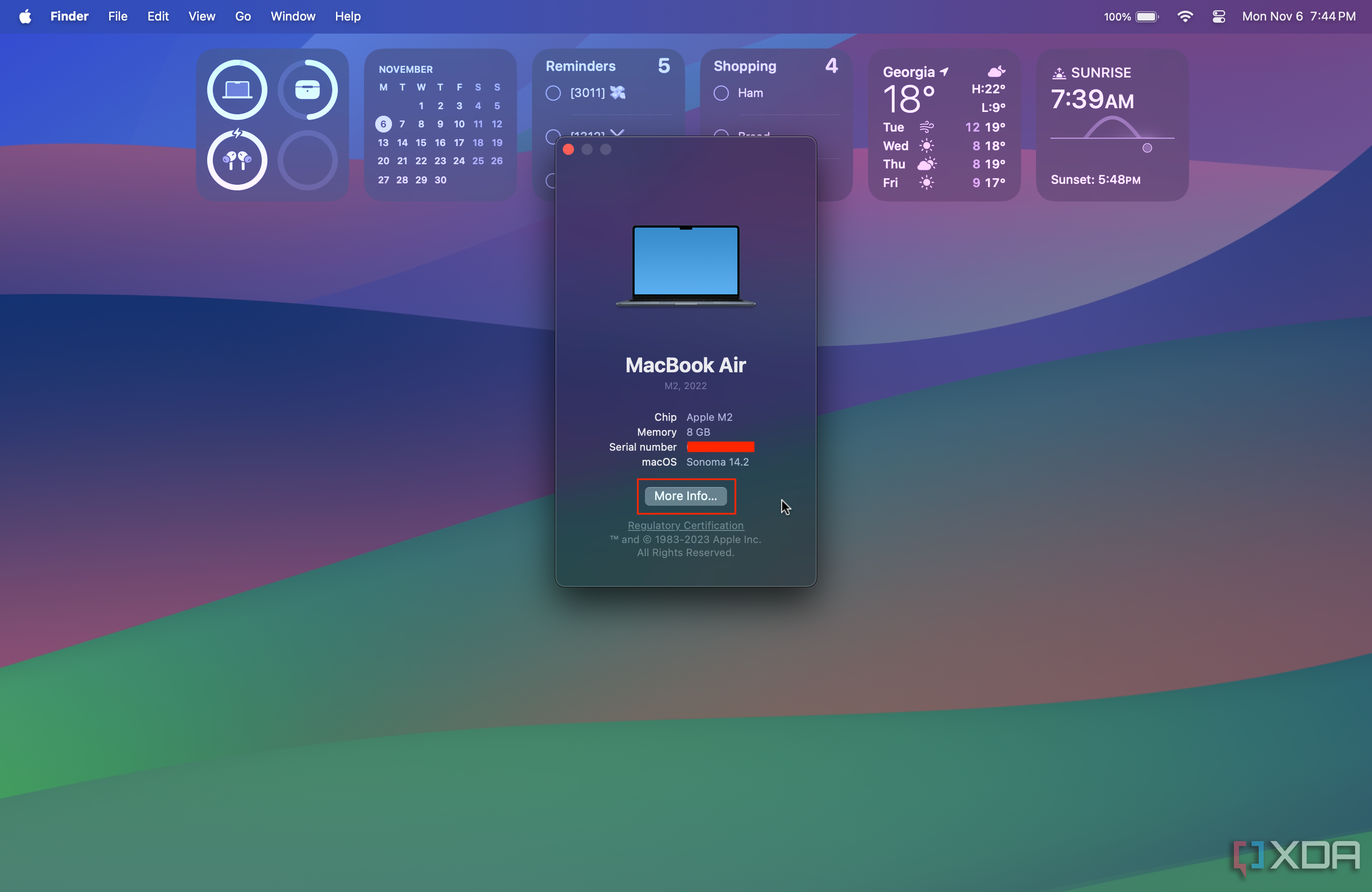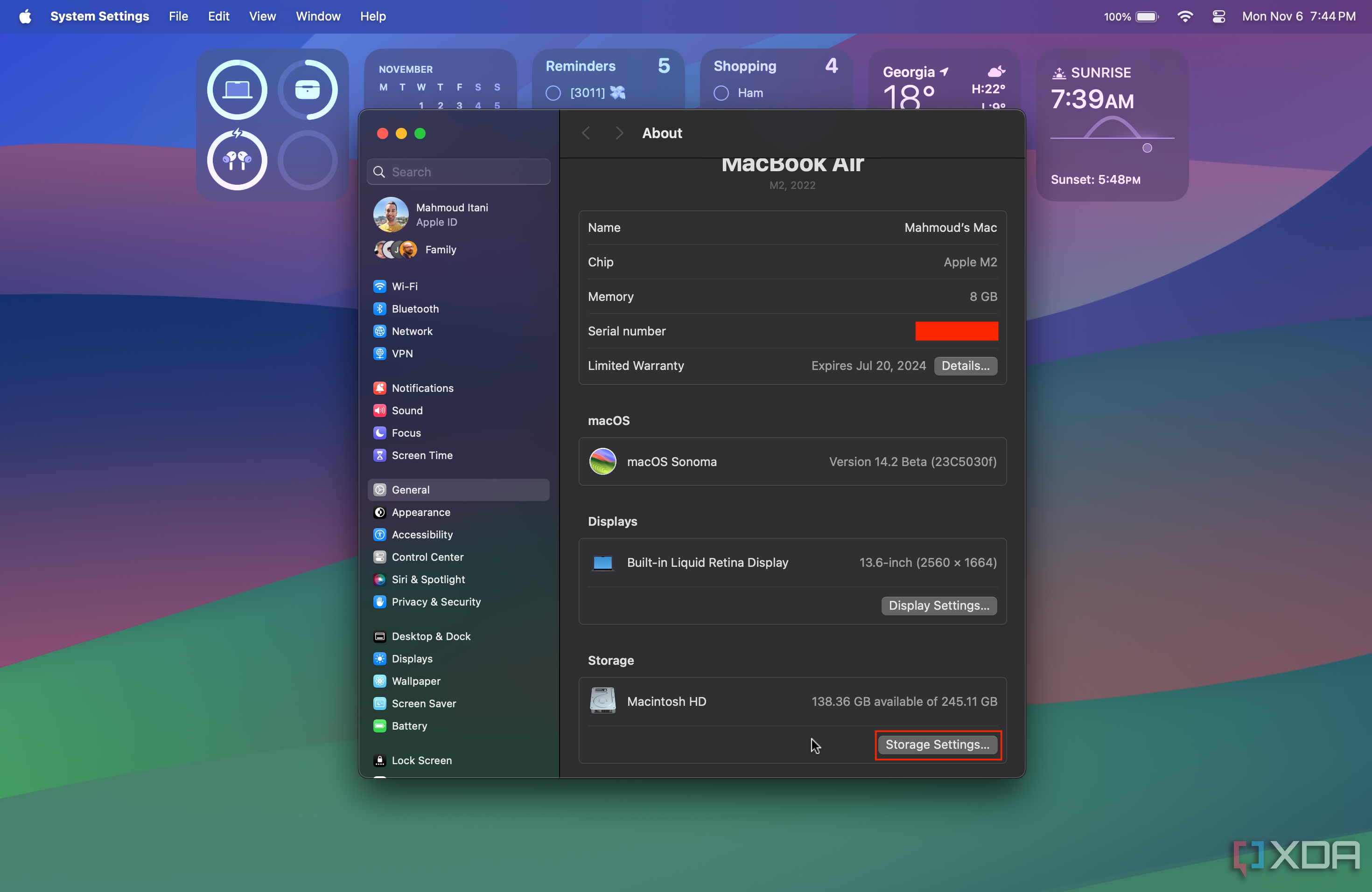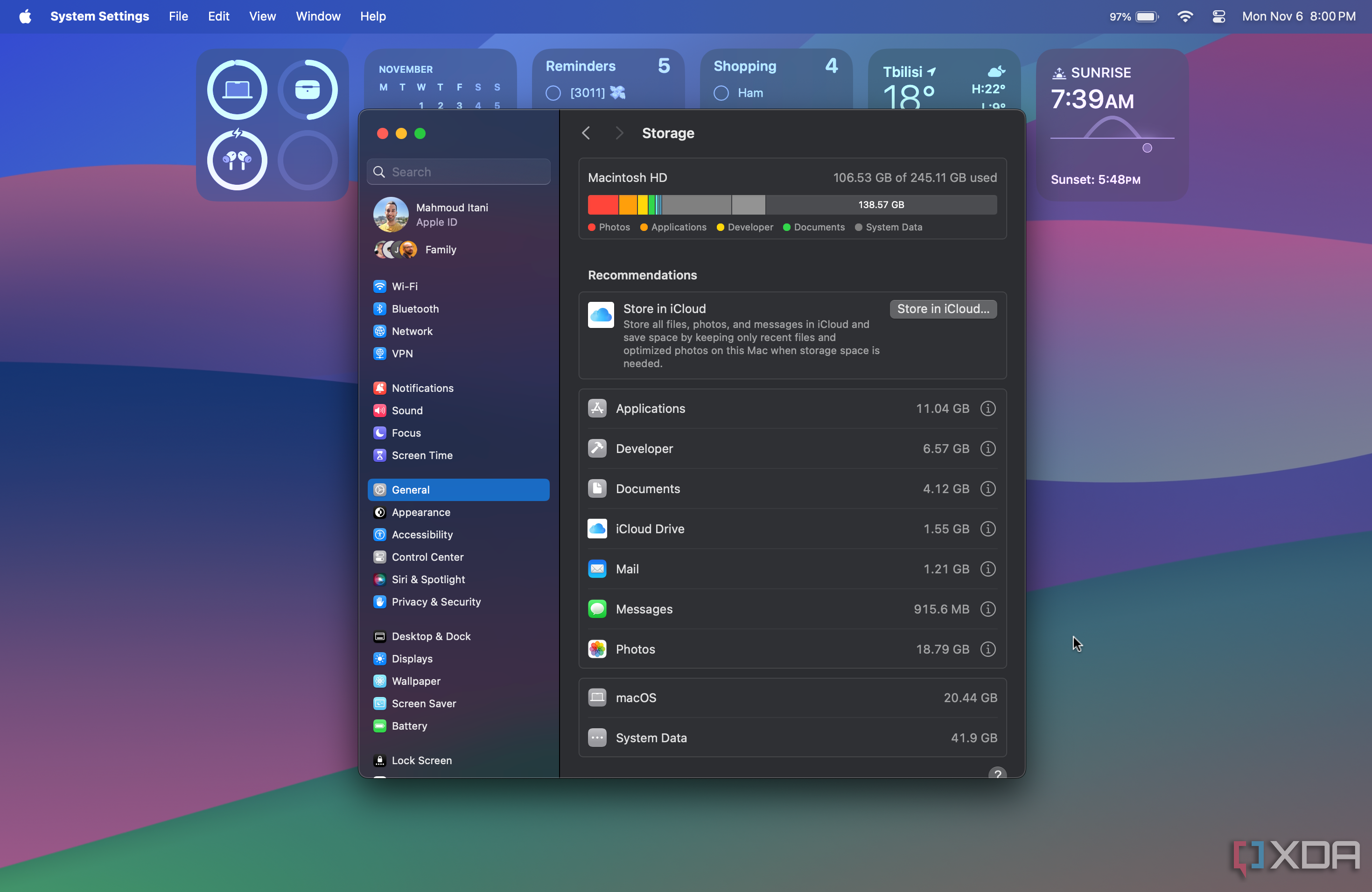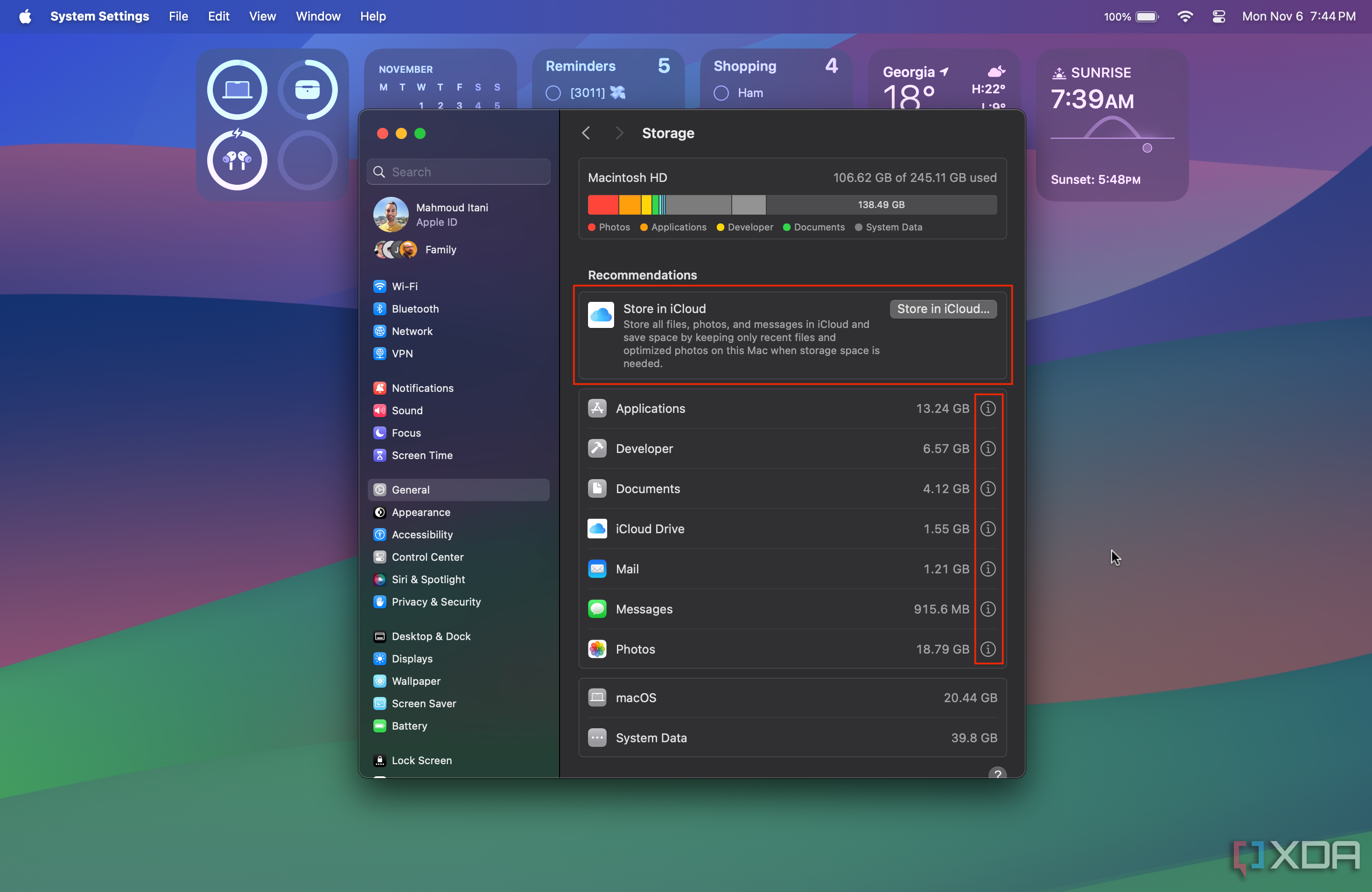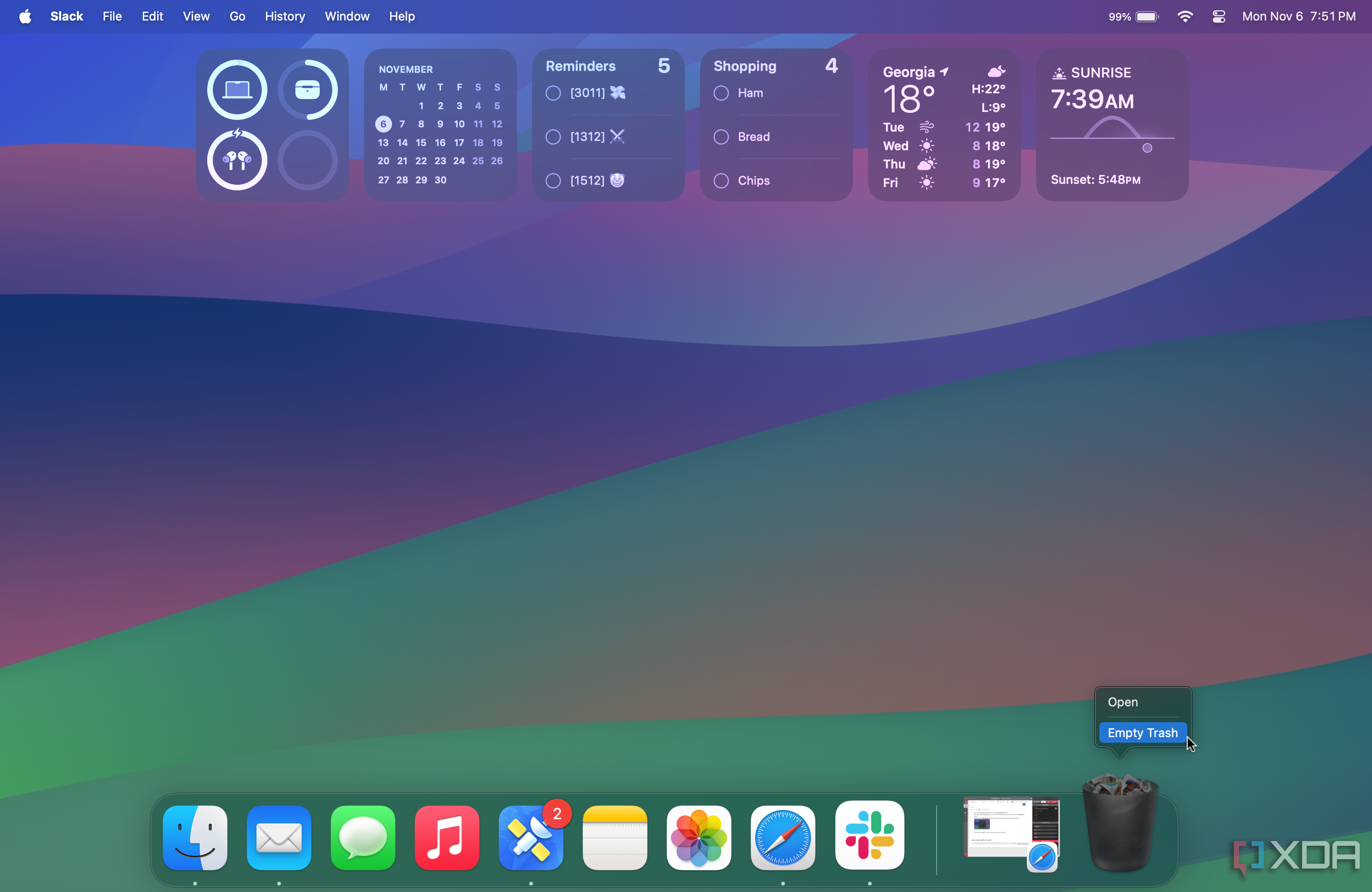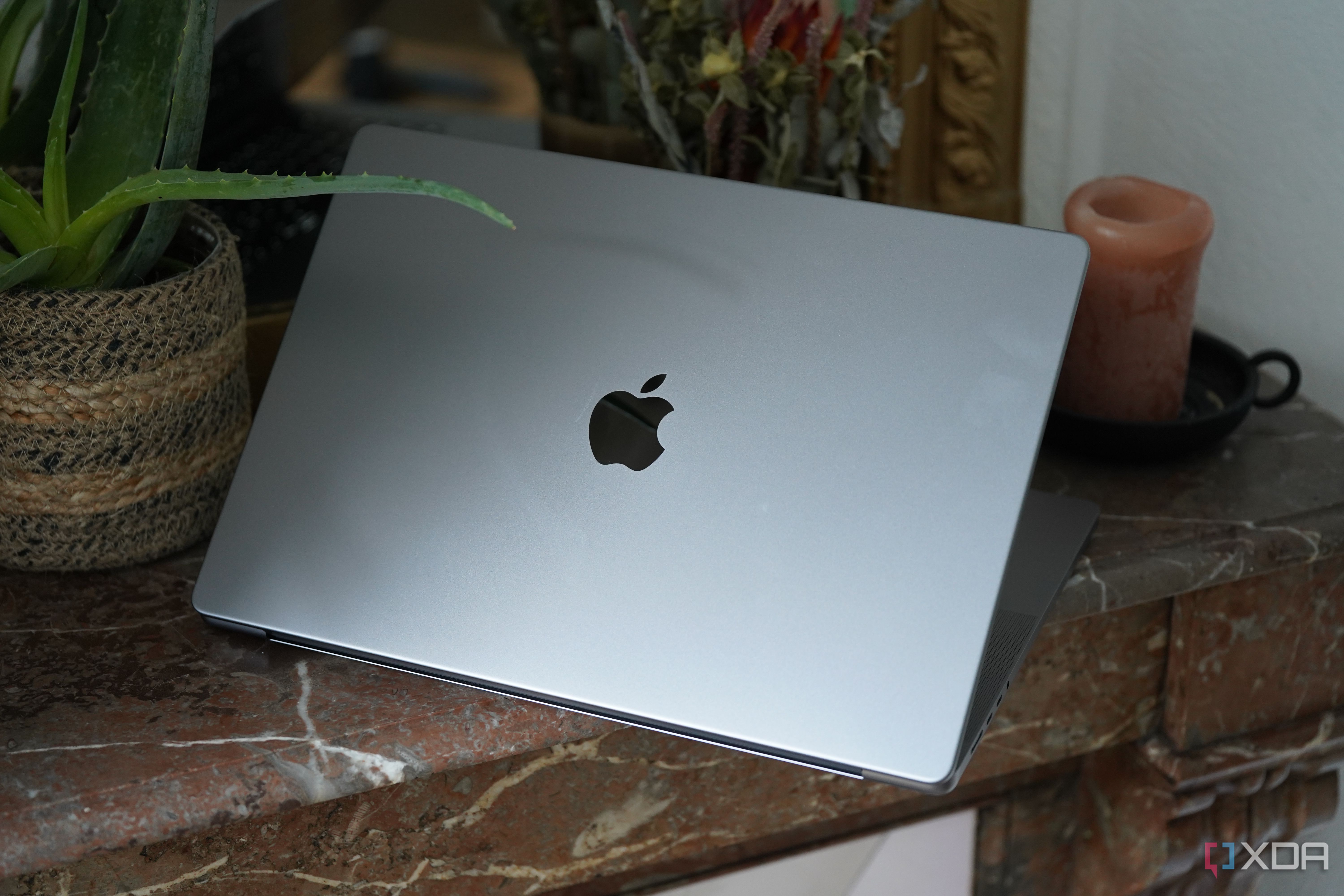Quick Links
The latest Macs are some of the most popular computing machines around the world. Powered by macOS Sonoma and Apple silicon, these powerhouses are both capable and energy efficient. This makes them ideal for productivity tasks, studying, and getting serious work done. Though, a common problem macOS users face is the full storage alert. Fortunately, you can easily get rid of it by freeing up space on your Mac.
How to check the storage on a Mac
To check your Mac's storage capacity, follow the steps below:
- Click on the Apple Logo in the top-left corner.
-
Tap on About This Mac.
-
Click on More Info.
-
Head to Storage Settings.
-
There you will find a summary of your storage, including the apps that are consuming it.
Easy ways to free up space on macOS
Once you're in Storage Settings, you can perform some easy actions to free up space:
- Turn on the suggested settings that suit you in the Recommendations section.
- Take a look at all installed programs on your Mac and consider deleting ones you don't need from the Applications section.
-
Do the same in the Documents and other sections listed. They all provide easy and bulk delete options.
-
Finally, empty the Trash if you don't need any of the files you've deleted.
How to clear cache on macOS
If you followed the steps above and are still unsatisfied with the free space you have, you can go ahead and clear the cache on your Mac. For those unfamiliar, cached data usually includes files loaded when viewing a certain page. Data could be cached by downloading the additional resources from an online server or by uncompressing certain files in the background. Either way, you can safely delete the cache, as it typically doesn't include user data. The next time you launch a certain app or page, however, it could take more time to load, as it will be caching the necessary files in the background again.
How to delete apps and their data
Apps sometimes consume a lot of disk space when installed on your Mac. And even after you delete them, they tend to leave files behind. Fortunately, you can completely uninstall apps and delete their junk files in more than one way. Though, keep in mind that the listed procedures should completely delete user data associated with the chosen app. So make sure you keep a separate copy of the data you've produced using the selected app before completely getting rid of it and its files.
How to compress files on Mac
Another way to clear the storage on your Mac is by creating ZIP files. Though, keep in mind that how much space this frees up depends on the type and number of files you're compressing. It may not be the most effective method in all cases, but it's one of the options. After compressing the files, make sure to delete the original, uncompressed ones to actually take advantage of the freed-up space.
How to delete unwanted iDevice backups
If you've used Finder on your Mac to create local backups of your iPhone or iPad, then you could delete unwanted backups by going to ~/Library/Application Support/MobileSync/Backup in the Finder app and trashing the unwanted files. This could free up significant space on your computer, as full device backups tend to be large.
The last resort
If you've tried everything, and you still don't have enough free space on your machine, you could consider factory resetting your Mac. This, however, will expectedly delete all of your apps, local data, folders, etc. So make sure you have a copy elsewhere before you give your Mac a fresh start.
Storing photos and documents in iCloud is always a great idea to save on space. This is because Apple allows you to safely keep your data in the cloud and offload them from your connected devices. This way, you free up space on your Mac, without needing to delete the data. When you need to access them again, you're one download away from having them back in their respective places.
If you have plenty of data on your Mac and don't want to get an iCloud+ subscription, you could always buy an external hard drive and keep a copy of data you don't frequently need stored there. However, hard drives can get stolen, damaged, or lost. So an iCloud+ subscription would offer you convenience, security, and peace of mind.

Apple iCloud+
iCloud+ is perfect for Apple users as it enables them to seamlessly back up and restore data from devices like iPhones, Macs, and more. The pricing is on par with Google Drive, and it's also integrated with Apple's iWork productivity suite.


